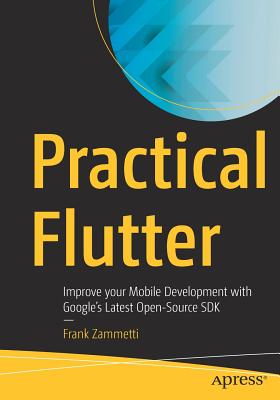買這商品的人也買了...
-
 $1,805Test-Driven Development: By Example (Paperback)
$1,805Test-Driven Development: By Example (Paperback) -
 $1,080Windows System Programming, 3/e (Hardcover)
$1,080Windows System Programming, 3/e (Hardcover) -
 The Art of Computer Virus Research and Defense (Paperback)
The Art of Computer Virus Research and Defense (Paperback)$2,230$2,119 -
 深入淺出設計模式 (Head First Design Patterns)
深入淺出設計模式 (Head First Design Patterns)$880$695 -
 深入淺出 Java 程式設計, 2/e (Head First Java, 2/e)
深入淺出 Java 程式設計, 2/e (Head First Java, 2/e)$880$695 -
 Java 認證 SCJP 5.0 猛虎出閘
Java 認證 SCJP 5.0 猛虎出閘$650$514 -
 $2,831Thinking in Java, 4/e (Paperback)
$2,831Thinking in Java, 4/e (Paperback) -
 鳥哥的 Linux 私房菜基礎學習篇, 2/e
鳥哥的 Linux 私房菜基礎學習篇, 2/e$780$663 -
 SQL 語法範例辭典
SQL 語法範例辭典$550$435 -
 CSS、HTML、XHTML 精緻範例辭典
CSS、HTML、XHTML 精緻範例辭典$450$356 -
 Visual C# 2005 建構資訊系統實戰經典教本
Visual C# 2005 建構資訊系統實戰經典教本$650$507 -
 新 Visual C++ 2005 學習講義
新 Visual C++ 2005 學習講義$620$484 -
 簡報設計王 2-善用圖表、插圖、動畫與範本來提升企劃說服力
簡報設計王 2-善用圖表、插圖、動畫與範本來提升企劃說服力$450$351 -
 寫給 SA 的 UML/MDA 實務手冊
寫給 SA 的 UML/MDA 實務手冊$350$298 -
 深入淺出物件導向分析與設計 (Head First Object-Oriented Analysis and Design)
深入淺出物件導向分析與設計 (Head First Object-Oriented Analysis and Design)$880$695 -
 C++ Primer, 4/e (中文版)
C++ Primer, 4/e (中文版)$990$891 -
 ASP.NET AJAX 經典範例 100─使用 VC#
ASP.NET AJAX 經典範例 100─使用 VC#$750$593 -
 ActionScript 3.0 與 Adobe Flex 網路遊戲程式開發實務講座
ActionScript 3.0 與 Adobe Flex 網路遊戲程式開發實務講座$450$351 -
 現代嵌入式系統開發專案實務-菜鳥成長日誌與專案經理的私房菜
現代嵌入式系統開發專案實務-菜鳥成長日誌與專案經理的私房菜$600$480 -
 Embedded Linux 開發實務徹底研究 (Embedded Linux Primer: A Practical Real-World Approach)
Embedded Linux 開發實務徹底研究 (Embedded Linux Primer: A Practical Real-World Approach)$720$569 -
 ASP.NET 商業級資料庫網站開發實務-與 ADO.NET 共舞
ASP.NET 商業級資料庫網站開發實務-與 ADO.NET 共舞$650$514 -
 $1,638Cross-Platform Development in C++: Building Mac OS X, Linux, and Windows Applications (Paperback)
$1,638Cross-Platform Development in C++: Building Mac OS X, Linux, and Windows Applications (Paperback) -
 VBScript 500 個活用範例 Windows 自動化技術大全 for Vista/XP/2000
VBScript 500 個活用範例 Windows 自動化技術大全 for Vista/XP/2000$590$460 -
 CCNA 認證教戰手冊 (CCNA: Cisco Certified Network Associate Study Guide (Exam 640-802), 6/e)
CCNA 認證教戰手冊 (CCNA: Cisco Certified Network Associate Study Guide (Exam 640-802), 6/e)$1,180$932 -
 if 與 else 的思考術:程式設計邏輯腦的養成講座
if 與 else 的思考術:程式設計邏輯腦的養成講座$320$250
相關主題
商品描述
Description
Gain the knowledge and tools to deliver compelling mobile phone applications.
Mobile and wireless application design is complex and challenging. Selecting an application technology and designing a mobile application require an understanding of the benefits, costs, context, and restrictions of the development company, end user, target device, and industry structure.
Designing the Mobile User Experience provides the experienced product development professional with an understanding of the users, technologies, devices, design principles, techniques and industry players unique to the mobile and wireless space. Barbara Ballard describes the different components affecting the user experience and principles applicable to the mobile environment, enabling the reader to choose effective technologies, platforms, and devices, plan appropriate application features, apply pervasive design patterns, and choose and apply appropriate research techniques.
Designing the Mobile User Experience:
- Provides a comprehensive guide to the mobile user experience, offering guidance to help make appropriate product development and design decisions.
- Gives product development professionals the tools necessary to understand development in the mobile environment.
- Clarifies the components affecting the user experience and principles uniquely applicable to the mobile application field.
- Explores industry structure and power dynamics, providing insight into how mobile technologies and platforms become available on current and future phones.
- Provides user interface design patterns, design resources, and user research methods for mobile user interface design.
- Illustrates concepts with example photographs, explanatory tables and charts, and an example application.
Designing the Mobile User Experience is an invaluable resource for information architects, user experience planners and designers, interaction designers, human factors specialists, ergonomists, product marketing specialists, and brand managers. Managers and directors within organizations entering the mobile space, advanced students, partnership managers, software architects, solution architects, development managers, graphic designers, visual designers, and interface designers will also find this to be an excellent guide to the topic.
Table of Contents
Preface.About the Author.
1 Introduction: Mobility is Different.
1.1 Mobilizing Applications.
1.2 What is ‘Mobile’ Anyhow?
1.3 The Carry Principle.
1.4 Components of a Mobile Application.
1.5 About This Book.
2 Mobile Users in the Wild.
2.1 Mobile User Characteristics.
2.2 Groups and Tribes.
2.3 International Differences.
3 Mobile Devices.
3.1 A Device Taxonomy.
3.2 Anatomy of the PCD.
4 Selecting Application Technologies.
4.1 Input Modalities.
4.2 Interaction Responsiveness.
4.3 Data Storage Locations.
4.4 Display Modality.
4.5 Supplemental Technologies.
4.6 Distribution Methods.
4.7 Other Concerns.
4.8 Platforms.
5 Mobile Design Principles.
5.1 Mobilize, Don’t Miniaturize.
5.2 User Context.
5.3 Handling Device Proliferation.
5.4 Emulators and Simulators.
5.5 Detailed Design Recommendations.
6 Mobile User Interface Design Patterns.
6.1 About User Interface Patterns.
6.2 Screen Design.
6.3 Application Navigation.
6.4 Application Management.
6.5 Advertising.
7 Graphic and Media Design.
7.1 Composition for the Small Screen.
7.2 Video and Animation.
7.3 Sound.
7.4 Streaming versus Downloaded Content.
7.5 Managing Media: Meta Data.
8 Industry Players.
8.1 Carriers (Operators).
8.2 Device Manufacturers.
8.3 Technology and Platform Providers.
8.4 Application and Content Developers.
8.5 Content Distributors.
8.6 Industry Associations.
8.7 Government.
9 Research and Design Process.
9.1 Mobile Research Challenges.
9.2 User Research.
9.3 Design Phase Testing.
9.4 Application Usability Testing.
9.5 Market Acceptance (beta) Testing.
10 Example Application: Traveler Tool.
10.1 User Requirements.
10.2 Product Requirements.
10.3 High-level Design Concepts.
10.4 Detailed Design Plan.
Appendices.
A: Mobile Markup Languages.
B: Domain Names.
C: Minimum Object Resolution.
D: Opt-In and Opt-Out.
E: Mobile Companies.
Glossary.
Index.
商品描述(中文翻譯)
**描述**
獲得知識和工具,以提供引人入勝的手機應用程式。
行動和無線應用程式設計是複雜且具有挑戰性的。選擇應用程式技術和設計行動應用程式需要了解開發公司、最終用戶、目標設備和行業結構的好處、成本、背景和限制。
《設計行動用戶體驗》為經驗豐富的產品開發專業人士提供了對行動和無線領域中用戶、技術、設備、設計原則、技術和行業參與者的理解。Barbara Ballard描述了影響用戶體驗的不同組成部分和適用於行動環境的原則,使讀者能夠選擇有效的技術、平台和設備,規劃適當的應用程式功能,應用普遍的設計模式,並選擇和應用適當的研究技術。
《設計行動用戶體驗》:
- 提供行動用戶體驗的綜合指南,幫助做出適當的產品開發和設計決策。
- 為產品開發專業人士提供理解行動環境中開發所需的工具。
- 澄清影響用戶體驗的組成部分和獨特適用於行動應用領域的原則。
- 探索行業結構和權力動態,提供對行動技術和平台如何在當前和未來手機上可用的見解。
- 提供行動用戶介面設計模式、設計資源和用戶研究方法。
- 以示例照片、解釋性表格和圖表以及示例應用程式來說明概念。
《設計行動用戶體驗》是信息架構師、用戶體驗規劃者和設計師、互動設計師、人因專家、人體工學專家、產品行銷專家和品牌經理的寶貴資源。進入行動領域的組織中的經理和主管、高級學生、合作夥伴經理、軟體架構師、解決方案架構師、開發經理、平面設計師、視覺設計師和介面設計師也會發現這是該主題的優秀指南。
**目錄**
- 前言
- 關於作者
- 1 引言:行動性是不同的
- 1.1 應用程式的行動化
- 1.2 什麼是「行動」?
- 1.3 攜帶原則
- 1.4 行動應用程式的組成部分
- 1.5 本書介紹
- 2 野外的行動用戶
- 2.1 行動用戶特徵
- 2.2 群體和部落
- 2.3 國際差異
- 3 行動設備
- 3.1 設備分類
- 3.2 PCD的解剖
- 4 選擇應用程式技術
- 4.1 輸入方式
- 4.2 互動響應性
- 4.3 數據存儲位置
- 4.4 顯示方式
- 4.5 補充技術
- 4.6 發佈方法
- 4.7 其他考量
- 4.8 平台
- 5 行動設計原則
- 5.1 行動化,而非迷你化
- 5.2 用戶背景
- 5.3 處理設備增殖
- 5.4 模擬器和模擬工具
- 5.5 詳細設計建議
- 6 行動用戶介面設計模式
- 6.1 關於用戶介面模式
- 6.2 螢幕設計
- 6.3 應用程式導航
- 6.4 應用程式管理
- 6.5 廣告
- 7 圖形和媒體設計
- 7.1 小螢幕的構圖
- 7.2 視頻和動畫
- 7.3 聲音
- 7.4 串流與下載內容
- 7.5 媒體管理:元數據
- 8 行業參與者
- 8.1 通信商(運營商)
- 8.2 設備製造商
- 8.3 技術和平台提供商
- 8.4 應用程式和內容開發者
- 8.5 內容分發商
- 8.6 行業協會
- 8.7 政府
- 9 研究和設計過程
- 9.1 行動研究挑戰
- 9.2 用戶研究
- 9.3 設計階段測試
- 9.4 應用程式可用性測試
- 9.5 市場接受度(beta)測試
- 10 示例應用程式:旅行者工具
- 10.1 用戶需求
- 10.2 產品需求
- 10.3 高層次設計概念
- 10.4 詳細設計計劃
- 附錄
- A: 行動標記語言
- B: 網域名稱
- C: 最小物件解析度
- D: 選擇加入和選擇退出
- E: 行動公司
- 詞彙表
- 索引































